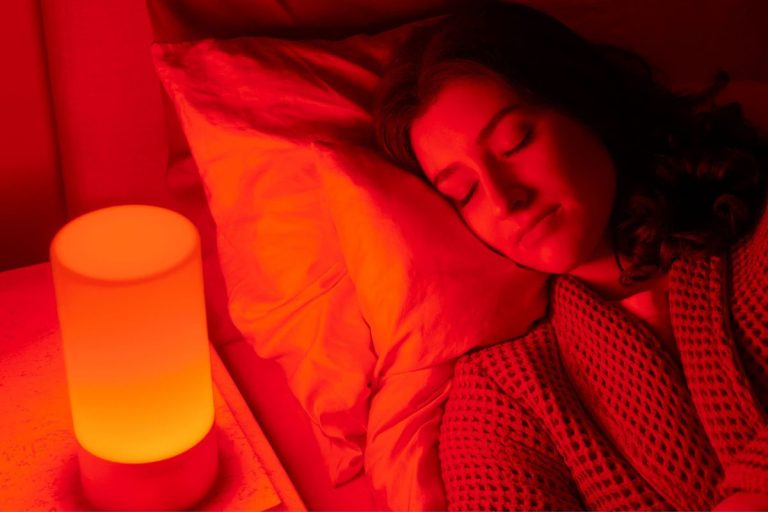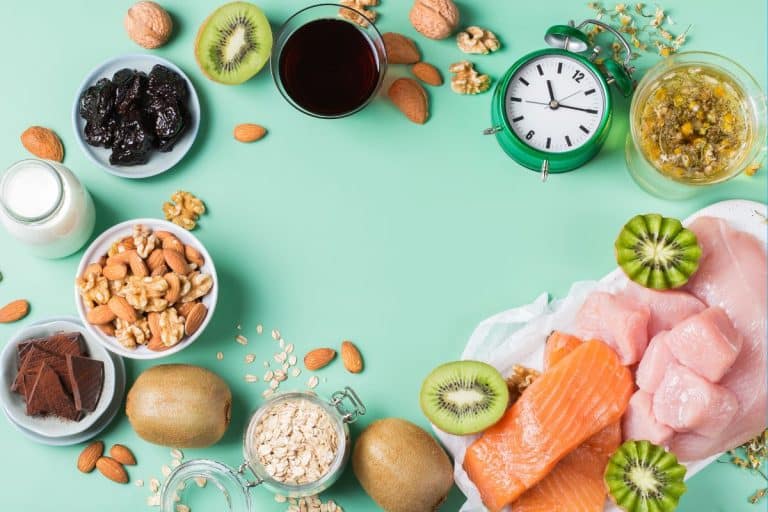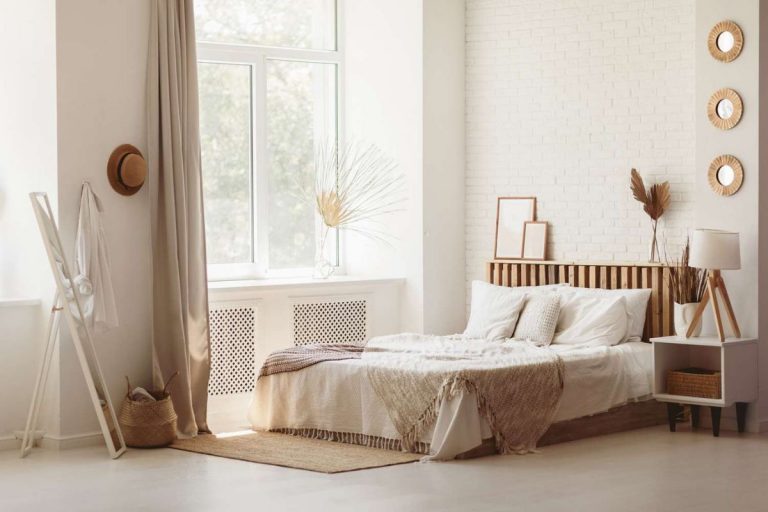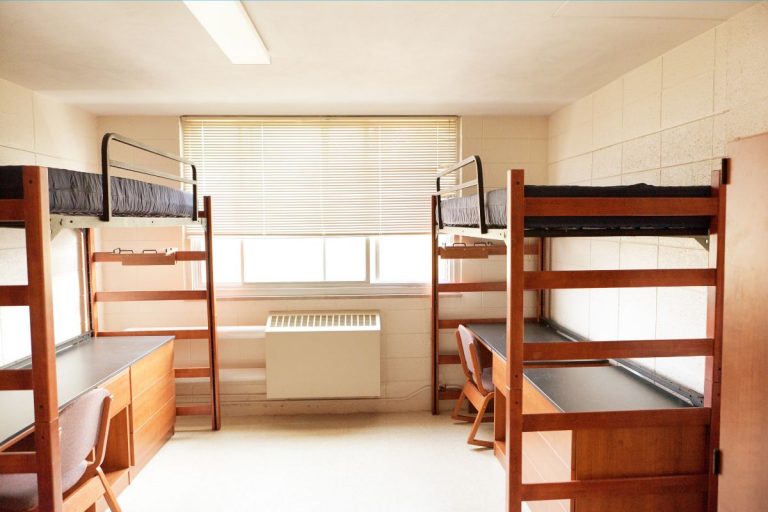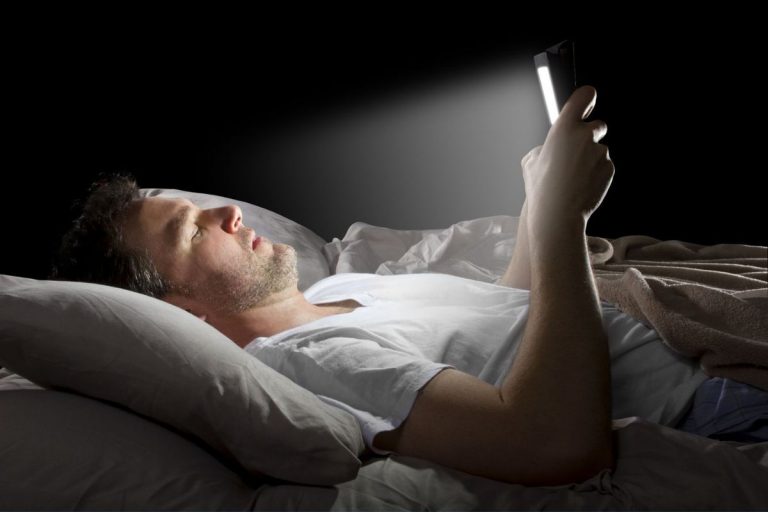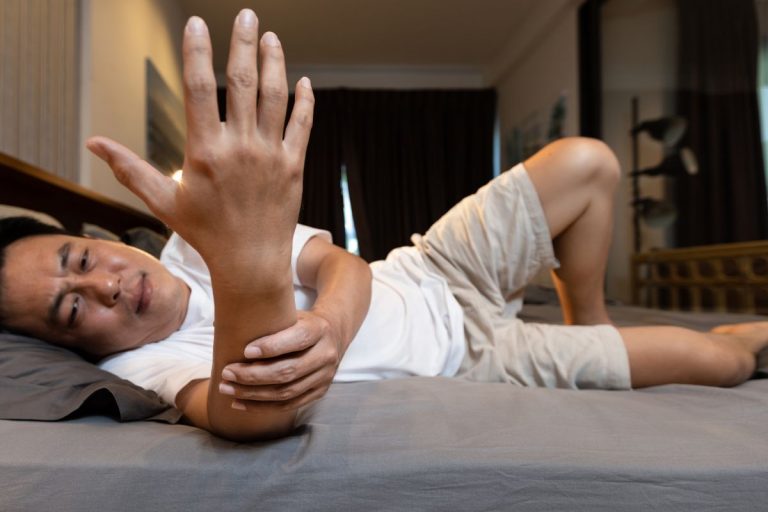On nights like these, you can’t help but be jealous of that person you know who can fall asleep in seconds. Whether the air is too sticky and humid, or dry and itchy, an imbalance can disrupt your sleep and create a very uncomfortable night in bed.
It all comes down to humidity. Controlling the humidity levels won’t just ensure that you sleep better, but it’s also good for your health. It may even be good for your home too, preventing mold and bacteria from thriving.
This article will explain what humidity is, what the optimum humidity level in your bedroom should be, and how to achieve it.
What is Humidity?
If your bedroom feels like this picture looks, then you’ll know what humidity is already. A tropical rainforest is the perfect example of humidity dialed up to another level!
There is water vapor in the air we breathe every day. The level of this water vapor is what we are referring to by humidity. High humidity means that there is a lot of water vapor in the air, while low humidity means that there’s very little.
Humidity vs Temperature
Many people often confuse humidity with temperature, as our homes tend to have low humidity in the winter and high humidity in the summer. But this isn’t the case. A rainforest has high humidity, while a desert has low humidity, for example. Both are hot environments.
Temperature is a separate beast entirely.
What confuses people is the way we measure the humidity. The best way is to measure it as relative humidity. It is true that warm air can hold more moisture than cold air, so even if there is the same amount of moisture in a warm room and a cold room, the cold room will be more humid than the warm room.
That’s why we don’t usually measure humidity as a figure, also known as absolute humidity, e.g., grams of moisture per volume of air.
Instead, we measure the relative humidity in the air as a percent figure. At 100%, the air is so full of moisture that it starts to form droplets and falls as rain. For warm air, this dew point is much higher compared to cold air.
TLDR
Confused? If you’re not scientifically minded, it can be hard to get your head around. But don’t worry. All you need to know is that we measure humidity as a percentage. Regardless of the air temperature, 100% means high humidity and 10% means low. Most air humidity levels are somewhere in-between.
Why Humidity is Such a Problem
Too much and too little humidity becomes a problem quite quickly.
High humidity makes it more difficult for your body to regulate temperature. Usually we sweat, so water evaporates off our skin to keep us cool. When there’s too much water vapor in the air (70% humidity and above), our bodies can’t keep cool. And that makes it just so much harder to fall asleep.
Other effects of high humidity include:
- Respiratory infections – bacteria and viruses thrive on high humidity,
- Allergens are more common, with mites and fungi thriving too,
- One review even found that “relative humidity also affects the rate of off gassing of formaldehyde from indoor building materials.”
On the other hand, low humidity makes the air feel very dry. Without moisture in the air, this can cause a sore throat, trouble breathing, and dry eyes. You can tell that your humidity is too low if you wake up with dry, cracked lips and a scratchy cough. You might also find that your skin is dry in general, and you can’t quite get warm, even with the thermostat turned right up.
One study discovered that a sudden drop in humidity and temperature increase the risk of a human rhinovirus infection (common cold)!
Furnishings, particularly wooden items, and wallpaper will shrink and peel too.
The Best Humidity for Sleeping
The perfect level of humidity will depend on your home, particularly its ambient temperature and ventilation, not to mention your own personal preferences. Regardless, most experts will give a humidity range from 30% to 60%.
Over 70% and your home will grow mold, you’ll sweat profusely, and start to feel faint. Lower than 20% and your furniture will warp, your skin will be dry, and you’re likely to get a cold or respiratory infection.
The EPA recommend keeping indoor humidity between 30% and 50%.
The CDC recommends humidity levels between 30% and 60% for health-care facilities, and less than 68% humidity of operating theaters.
Summer Humidity
During the summer months, humidity tends to rise. As humidity prevents your body from cooling itself efficiently, you’ll usually find that high humidity is harder to sleep through compared to dry heat. You can really feel the humidity in the air before a thunderstorm – it also creates excess static electricity. Then, the air reaches dew point, and the rain begins.
But as you cannot control the weather, you need to control the humidity inside your home. The key during the summer is to reduce humidity so your body can cool itself through sweating.
Try your humidity at 10% lower than usual, but don’t dip below 30%.
Winter Humidity
During the winter months, the air tends to dry out in our homes – especially if we have the central heating on all the time. The ventilation in our homes tends to be limited during these months too. As a result, you’ll feel as dry and cold as the air around you.
Increasing the humidity should keep your skin and respiratory system healthy but be careful not to over-do it. 60% is considered the upper limit, so start at 50% and adjust as needed. Many people find that between 35% and 45% is just right for the depths of winter. For methods and tips on how to alter the humidity in your home, see below.
Humidity for Babies
Just like adults, babies need the right level of humidity to sleep well. The problem is, how can you tell if they are comfortable with the humidity or not?
Unlike an adult, your baby cannot tell you with words that the humidity is wrong. Instead, they cry and have disturbed sleep, waking you up frequently throughout the night. Any number of problems could be causing this (not to mention, it’s quite normal and common for babies to not sleep through the night) so you need to look out for signs.
If you notice your baby has any trouble breathing, is excessively hot, or shows any other sign of the air being too humid or too dry, you should first call your doctor. Check that it’s not a sign of something more serious before adjusting the humidity.
Generally, the right humidity for babies is 40% to 55%. Never exceed 60%, for the reasons listed above. Babies may be less able to tolerate low humidity at night, so that’s why many believe the optimum range for babies starts at 40% rather than 30%.
3 Ways to Control Humidity
So now you know what humidity is and what it should be. But how do you change it? There are several different ways to change the humidity of a room, and we also highly recommend using a hygrometer. This device will measure the humidity in the room, so you will know what humidity the room has naturally… and tell if your chosen humidity control method is really working!
Dehumidifier/Humidifier Machine
One easy way to alter the humidity of a room is with a machine. There are two that you might need:
- Dehumidifier – filters the air to remove water, then filters it back into the room. The water is collected in a separate container to be emptied when full. Dehumidifiers work in one of two ways:
- Cooling – they cool the air, causing the water vapor to liquify and drip down, then they warm the air back up to room temperature and release it.
- Absorption – they draw the air through a fan and through an absorbing material. The water vapor in the air is absorbed, and the dry air passes through and back into the room.
- Humidifier – adds water back into the air, creating more humidity within the room. There are three types of humidifier machines:
- Evaporative – a “wick” is soaked in water, then air is blown over it. This evaporates the water into the air (while also filtering out minerals and dust) which is released slowly into the room.
- Ultrasonic – a nebulizer vibrates water at an ultrasonic speed, turning it into a fine, cold mist that’s pumped into the room.
- Hot – much like a kettle or pot on the stove, this humidifier heats the water until it boils and releases hot vapor into the air, which is released into the room.
Each type has its own benefits and disadvantages. For example, the ultrasonic humidifier is the quietest but doesn’t filter the air for minerals, bacteria, and other compounds. The hot humidifier, on the other hand, boils the water to sterilize it… but it’s going to get quite steamy, so it’s unsuitable for hot temperatures.
Both dehumidifiers and humidifiers are available at a range of prices. You can find them easily on Amazon.
Also Read:
Humidity Mask for Sleeping
A humidity mask works for your eyes but doesn’t do much for your breathing – you’ll need a humidifier/dehumidifier for breathable room air. A humidity mask, also called a moisturizing mask, sits over your eyes and protects them from the air in the room.
If your room has too much humidity, a cooling and drying mask is most appropriate. If you usually wake up with dry and itchy eyes, then they aren’t getting enough moisture and your humidity isn’t high enough. Dry eyes can also be caused by your lifestyle and other medical conditions, so speak to your doctor if you have chronic dry eyes that are interfering with your day-to-day tasks.
You may want to try a product like the kimkoo heat therapy eye compress. It may help relieve tired and strained eyes too. If you spend all day looking at your computer or your phone (hands up, we all do these days!) then it’s worth trying, at least.
DIY Humidity
For those who don’t want to spend any money on humidifiers and masks, there are some DIY options available.
To reduce the humidity in a room:
- Keep the ventilation fans on – even when your shower is over, keep that fan spinning and leave the door open too. Draw as much moisture out of the air as you can before turning it off.
- Remove houseplants and drying laundry to another room or outside – they contribute more moisture to the air than you may realize.
- Open a window OR run the air conditioning. Both options will increase the breeze and hopefully draw out some of the moisture. Running both at once, however, is just going to be a waste of energy (and therefore money).
To increase the humidity in a room:
- Use electronic or candle-powered oil diffusers… but replace the oil with water to release it slowly into the air.
- Boil the kettle or a pot of water on the stove, to release water into the air while you are cooking.
- Leave glasses of water by the radiator, windowsill and anywhere else that there’s a warm or airy place to help water slowly evaporate into the air.
Besides these things, you can also reverse the 3 tips for reducing humidity. E.g., turn off ventilation fans when showering, dry your laundry inside, and keep the windows shut and air-con off.
How to Sleep in High Humidity
If it’s 2 am and you’re feeling so frustrated with the humidity that you want to cry, then there’s no time to buy a humidity mask for sleeping or try our DIY hacks.
But don’t panic. Take a deep breath and try these 5 tips for sleeping in high humidity and high temperatures.
Mattress Type
Try flipping your mattress, to start with, so you’re sleeping on a firmer and plusher surface that you don’t instantly sink into.
If possible, sleep on a firm mattress that’s made with natural materials, e.g., latex or innerspring with cotton or wool stuffing. Synthetic materials, including memory foam, can make it harder for your body to keep cool, which is essential to sleeping in high humidity environments.
Moisture-Wicking Sheets
If purchasing a new mattress isn’t in your budget, then consider new sheets instead. You can buy thin summer sheets that are designed to keep you cool. Keep an eye out for cotton sheets and bamboo fiber sheets.
Bamboo is very breathable and allows more air to move around your body and through the sheets. This can help to cool you down overnight. Synthetic polyester sheets can have the opposite effect.
Lower the AC Speed
Whether you use an electric fan or AC unit, it’s tempting to fire it up at the highest speed and keep it there all night. But this might not be the right thing to do.
Blasting your body with cold and fast-moving air can disrupt your sleep patterns and increase your heart rate, according to one study. It’s better to use a moderate or slow air flow, but with a cooler temperature. You can also turn the direction of the fan or AC around, so it blows into the other side of the room and filters across to you slowly, rather than directing the airflow directly onto your body.
Put Your Pjs in the Freezer
No, really.
Putting your sleepwear and even your sheets/pillowcases in the freezer during the day can keep them cool at night. Just make sure that you seal them in a plastic freezer bag before you put them in. Otherwise, they’ll stick to all those frozen meals and escaped peas!
This hack works best with hot temperatures, regardless of humidity. The hotter the temperature, the quicker the materials will warm up.
Block Out the Sun
During the daytime, open the windows but keep the curtains closed. If your curtains are thin, try blocking out the windows by draping thicker materials over them, or even boards. The more sun you can keep out, the cooler your room will be in the evening.
Keeping the windows open is also key, to help ventilate the room.
When you spend all day outside, enjoying the summer, your room will feel cooler and drier in the evening when you return home. Combined with freezer-cold, moisture-wicking sheets and the right AC set-up, you can often manage to get a decent night’s sleep even with high humidity.
The best thing to do, however, is to purchase a dehumidifier to reduce the moisture in the air to just the right level.
FAQs
What humidity level for bedrooms?
Between 30% and 60% humidity is considered a health range, however, you may find that if you are particularly sensitive, this is still too much variation. The best thing to do is measure the humidity and adjust humidifiers/dehumidifiers until the room is at 50% humidity. Try it out for a few nights, the adjust accordingly.
What is the best humidity level for sleeping in winter?
During the winter, we advise you to keep the humidity levels in your bedroom at 45%. Most people find that 35% to 45% is about right, with some preferring a 50% humidity. It’s best not to exceed a humidity level of 60%, even if the air is super dry in the depths of winter. Over 60% and you increase the risk of a bacterial infection and create the perfect moist conditions for viruses and mold in your household.
What is the ideal humidity for a sleeping baby?
For babies, keep the humidity around 50%. This is a balanced humidity for babies that will ensure that the water in the air is just right for sound sleep. Unlike adults, a baby can’t easily tell you when they’re struggling to sleep because of humid air – so it’s up to you to ensure it’s perfectly balanced. 50% air humidity is about right.
Does humidity help sleep?
The best environment isn’t too dry (irritates the nose and throat) or too humid (dehydrates your body and disrupts sleep patterns). You need to find a good balance. Only increase the humidity if the air is too dry.
Is it bad to sleep with high humidity?
For many people, it’s not good. Unless you are acclimatized to sleeping in high humidity conditions from birth, suddenly switching to high humidity can disrupt your sleep pattern, dehydrate your body (through sweating), and even expose your body to allergens.
What is a high humidity?
Typically, any humidity over 70% is considered high humidity because at this point, it becomes difficult for sweat on your skin to evaporate. As the air is already dense with water vapor, your sweat won’t evaporate, and your body struggles to stay cool. That’s why dry heat is easier to deal with than humid heat.
What does 100% humidity feel like?
At 100% humidity, you’ll feel extremely hot and faint/lightheaded. Your sweat won’t be able to evaporate off your body to cool you down, as the air is already carrying all the water vapor it can hold – this is the meaning of 100% humidity. It doesn’t mean that the air is 100% water, but it is carrying all the water vapor it possibly can without the water turning to droplets and falling as rain.
The air gets closest to 100% just before a thunderstorm. You can feel the thickness of the air – it’s stuffy and hard to breathe.
